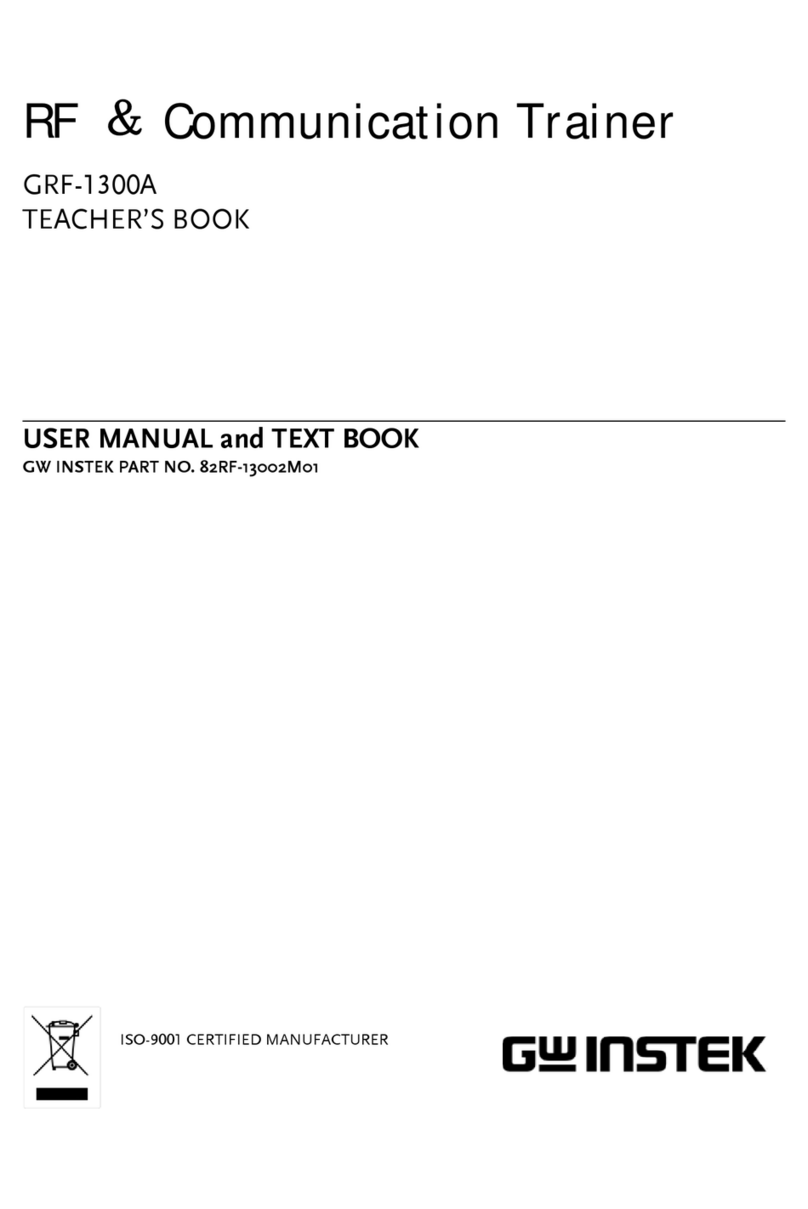SAFETY INSTRUCTIONS
3
(Measurement categories) EN 61010-1:2010 specifies the measurement categories and their
requirements as follows. The device falls under category I.
Measurement category IV is for measurement performed at the source of a low-voltage installation.
Measurement category III is for measurement performed in a building installation.
Measurement category II is for measurement performed on circuits directly connected to a low
voltage installation.
Measurement category I is for measurements performed on circuits not directly connected to
Mains.
Power Supply
WARNING
AC Input voltage: 100 ~ 240V AC, 50 ~ 60Hz.
Connect the protective grounding conductor of the AC power cord to an
earth ground to prevent electric shock.
Fuse
WARNING
Fuse type: 1A/250V.
Only qualified technicians should replace the fuse.
To ensure fire protection, replace the fuse only with the specified type and
rating.
Disconnect the power cord and all test leads before replacing the fuse.
Make sure the cause of the fuse blowout is fixed before replacing the fuse.
Cleaning the
GRF-1300
Disconnect the power cord before cleaning the device.
Use a soft cloth dampened in a solution of mild detergent and water. Do
not spray any liquid into the device.
Do not use chemicals containing harsh products such as benzene, toluene,
xylene, and acetone.
Operation
environment
Location: Indoor, no direct sunlight, dust free, almost non-conductive
pollution (Note below) and avoid strong magnetic fields.
Relative Humidity: < 80%
Altitude: < 2000m
Temperature: 0°C to 40°C
(Pollution Degree) EN 61010-1:2010 specifies pollution degrees and their requirements as follows. The
device falls under degree 2.
Pollution refers to “addition of foreign matter, solid, liquid, or gaseous (ionized gases), that may
produce a reduction of dielectric strength or surface resistivity”.
Pollution degree 1: No pollution or only dry, non-conductive pollution occurs. The pollution has no
influence.
Pollution degree 2: Normally only non-conductive pollution occurs. Occasionally, however, a
temporary conductivity caused by condensation must be expected.
Pollution degree 3: Conductive pollution occurs, or dry, non-conductive pollution occurs which
becomes conductive due to condensation which is expected. In such conditions, equipment is
normally protected against exposure to direct sunlight, precipitation, and full wind pressure, but
neither temperature nor humidity is controlled.
Storage
environment
Location: Indoor
Relative Humidity: < 70%
Temperature: -10°C to 70°C
Disposal
Do not dispose this device as unsorted municipal waste. Please use a separate
collection facility or contact the supplier from which this instrument was
purchased. Please make sure discarded electrical waste is properly recycled
to reduce environmental impact.
www.GlobalTestSupply.com
Find Quality Products Online at: sales@GlobalTestSupply.com




























